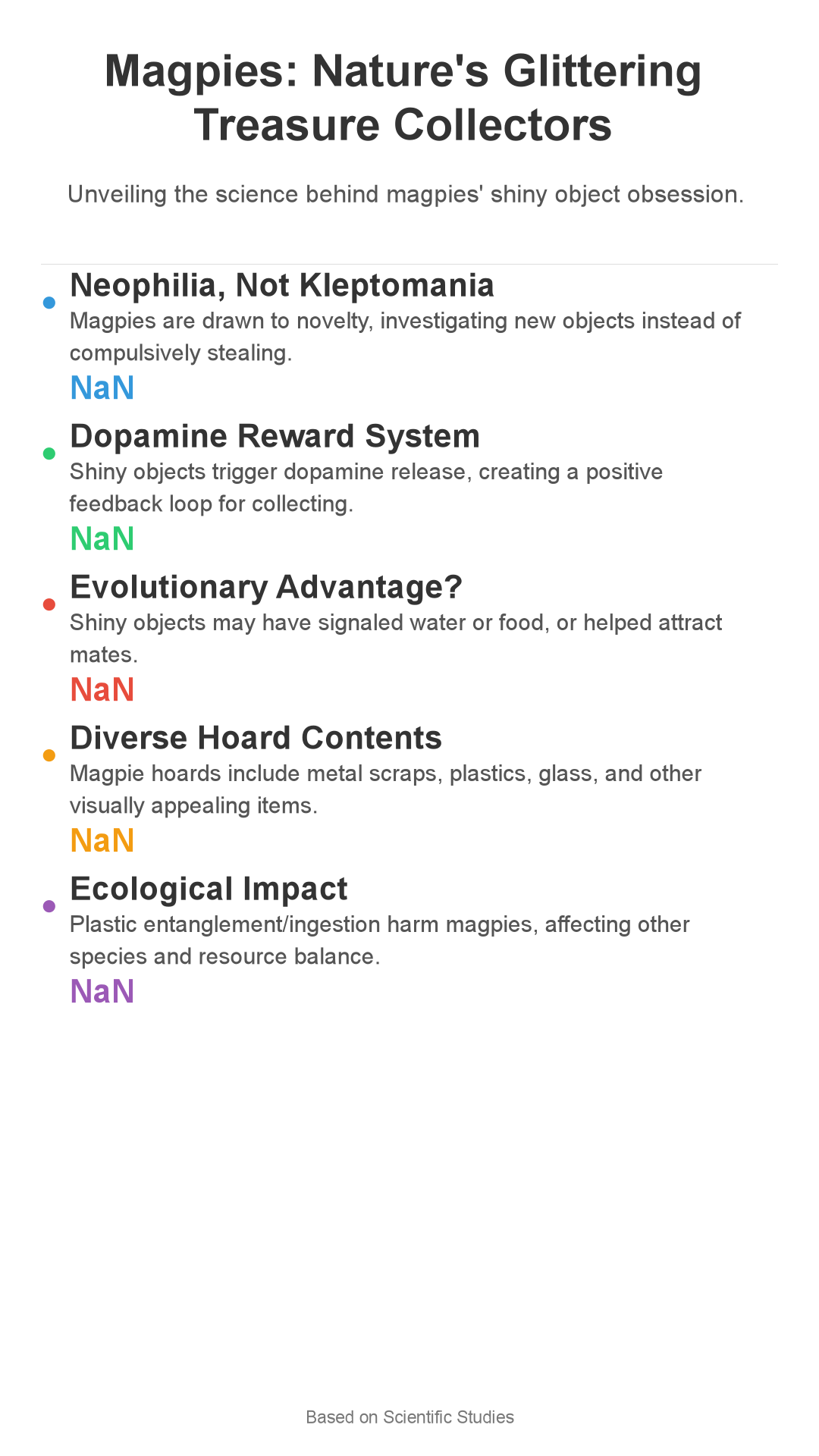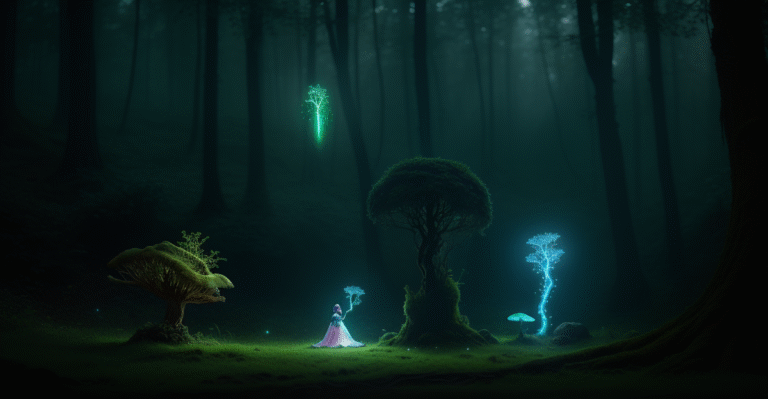
Ever imagined a Griffin's hoard overflowing with glittering jewels and mountains of gold? and decide
Remember griffins guarding mountains of gold? Turns out, they might be inspired by nature’s own sparkly-treasure hunters: magpies! We’re diving into the science of shiny object obsession – you may find it interesting what these birds collect and why! Click like and follow for more remarkable animal facts!
Ever stared at a griffin in a fantasy painting, mesmerized by the glittering treasure it guards? These mythical creatures, perched atop piles of gold and jewels, ignite our imagination about the irresistible allure of treasure.
But what if I told you that real creatures share this fascination, albeit on a slightly smaller scale?
The Magpie Mind: Understanding the Attraction to Shiny Objects
Magpies, those clever members of the crow family, are famous (or infamous) for their habit of collecting shiny objects. But is this just a cute quirk, or is there something more profound driving their behavior? Let’s explore the science behind their sparkly obsession.
Neophilia vs. Kleptomania: Debunking Myths
While it’s tempting to jokingly call magpies kleptomaniacs, the truth is much more interesting. “Kleptomania” suggests a compulsion fueled by anxiety, something never proven in magpies.
A more accurate term is “neophilia,” meaning a fondness for novelty. Studies show that magpies are drawn to new and unfamiliar objects, regardless of their monetary value.
It’s less about stealing and more about investigating something potentially fascinating.
The Role of Dopamine: The Reward System
So, why shiny objects in particular? The answer likely lies within their brains.
When magpies encounter something new and visually stimulating, like sunlight glinting off a piece of metal, it triggers the release of dopamine, a brain chemical linked to pleasure and reward.
This creates a positive feedback loop, encouraging the bird to seek out more shiny objects and repeat the collecting behavior.
Evolutionary Advantage?
Could this behavior have originally served a purpose for survival? It’s a compelling question. One theory suggests that, long ago, shiny objects might have signaled the presence of water or food.
A sparkle of light could have led them to a puddle or a discarded piece of fruit. Another idea is that collecting bright objects might have been a way to attract mates or decorate nests, showcasing the bird’s resourcefulness and desirability.
While the exact evolutionary reason is still debated, it’s clear this behavior has stuck around for a reason.
Beyond Gold: What Makes a Magpie’s Hoard So Diverse?
Forget the stereotypical gold and jewels – a magpie’s hoard is a fascinating mix of anything that grabs their attention. From metallic scraps to colorful plastics, their collections are a testament to their indiscriminate curiosity.
Categorizing the Collection
What do magpies actually collect? The answer is: almost anything! Common items include bits of metal foil, bottle caps, pieces of glass, colorful plastic fragments, and even small toys.
The key seems to be visual appeal – whether it’s the shine, the color, or the unusual shape.
Regional Variations
The contents of a magpie’s hoard can change depending on where it lives. In cities, they might find more plastic and metal waste, while in rural areas, they might collect more natural items like pebbles, shells, or colorful leaves.
The availability of materials strongly influences their collections. Think of it as a reflection of their surroundings – a snapshot of the local environment.
[IMAGE: A collage showcasing diverse items found in magpie hoards from different regions: urban vs.
The Functionality (or Lack Thereof)
Is there a real purpose behind the objects they collect, or is it purely instinct? This is still being investigated.
While some magpies might use collected items to decorate their nests, providing insulation or marking their territory, most of the collected objects seem to have no practical use.
It seems to be more about the act of collecting itself, driven by their natural curiosity and the dopamine rush it provides.
The Ecological Impact of Magpie Hoarding Habits
While magpies’ collecting habits might seem harmless at first glance, they can have serious ecological consequences, especially in our age of plastic pollution.
Entanglement and Ingestion
One of the biggest worries is the risk of entanglement and ingestion. Magpies can get tangled in plastic rings or netting, leading to injury or even death. They might also swallow small pieces of plastic, mistaking them for food.
This can cause digestive problems, malnutrition, and the build-up of toxins in their bodies. It’s a stark reminder of the dangers of plastic pollution and its devastating impact on wildlife.
Competition and Resource Depletion
Magpie hoarding can also affect other animals. By collecting resources like pebbles or shells, they might be depriving other species of essential materials for building nests or finding food.
This can lead to increased competition and resource depletion, disrupting the delicate balance of the ecosystem.
The Silver Lining?
But is there a positive side? Could magpies unintentionally help clean up litter in urban areas?
While their impact is likely small, their collecting habits might remove some litter from the streets, preventing it from reaching waterways or harming other wildlife.
Myth vs. Reality: Comparing the Griffin’s Hoard to Nature’s Magpies
Let’s return to our original inspiration: the griffin. How does the mythical griffin’s hoard compare to the reality of a magpie’s collection?
Symbolism and Storytelling
Why are griffins linked to gold and treasure in mythology? Gold has always symbolized wealth, power, and divinity.
By associating griffins with gold, ancient cultures likely gave them these qualities, portraying them as guardians of valuable and sacred objects. It’s a powerful image that has endured throughout history.
The Human Element
Let’s explore our own fascination with shiny objects and how it mirrors (or influences) our view of magpies. Humans, too, have always been drawn to shiny things, from gold jewelry to sparkling gemstones.
This shared fascination might explain why we find magpies’ collecting habits so captivating.
Lessons from Nature
What can we learn about conservation and responsible consumption from studying the hoarding habits of magpies? Their story is a powerful reminder of how our actions affect the environment.
By reducing our use of single-use plastics and properly disposing of waste, we can help protect magpies and other wildlife from the dangers of entanglement and ingestion.
So, next time you see a magpie flitting about, remember that its attraction to shiny objects is driven by a complex mix of brain chemistry, evolutionary instincts, and environmental factors.
And consider this: what does our own fascination with shiny things say about us?
What’s the weirdest thing you’ve ever seen a bird collect? Share your stories in the comments below!
Enjoyed this deep dive into the world of magpies? Share this article with your friends and family and let’s spread the knowledge!

Enjoyed this? Check out our YouTube channel for video versions!
Enjoyed this? Check out our YouTube channel for video versions!



